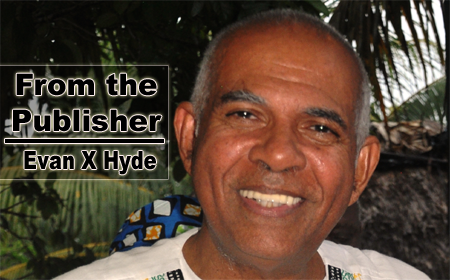May 29 of this year will mark the fiftieth anniversary of a major incident (or series of incidents) in Belize City which has been ignored by the media and academics of Belize.
In fairness, one needs to point out that in 1972 there was only one radio station in Belize. (Today, there are maybe fifty or sixty radio stations in The Jewel.) The one 1972 radio station was a government monopoly called Radio Belize, and the ruling People’s United Party (PUP), which had never lost a national election in its 22-year history, used the station for political propaganda.
There was no television here in 1972, except in the northern part of Corozal, where Belizeans saw Mexican television stations. At least, that is my understanding. (I know that around November of 1970 the late Galento X Neal and I saw the Muhammad Ali vs Oscar Bonavena fight on television at a sidewalk cafe in Chetumal.)
There was no internet or social media in Belize in 1972. These things were not invented until the 1990s, to the best of my knowledge.
In May of 1972, the only real newspaper in Belize was THE REPORTER. The late Hon. Philip Goldson had closed down his BELIZE BILLBOARD in early 1972 and gone to study law in London. AMANDALA was a tiny entity printed on a letter press. The editor in May 1972 was the UBAD Secretary-General, Norman Fairweather. When he was remanded to Her Majesty’s Prison (along with 10 or 11 UBADers) for a week because of the May 1972 incidents, I believe a UBAD officer who was a Spanish teacher at St. Michael’s College, Elbert “Shaft” Franklin, edited an issue of the newspaper.
I imagine I will discuss the May 1972 uproar some more in the next couple months, but I opened with the May 1972 subject to give you a sense of how few sources a researcher who wanted to look at May 1972, would have available.
The topic I want to look at today is the Belize Black Summit of September 2003, a subject a researcher would have a lot more sources to explore than one would if one wanted to study the May 1972 uprising.
If one really wants to try to figure out what happened to Belize’s black community between 1972 and 2022, if one really wants to identify the phenomena which have led to the civil war among black youth here, a shooting war which has been going on for more than three decades, then one needs to go over what happened during the three days of the Belize Black Summit, held at the Biltmore Hotel.
The media and academics in Belize have totally ignored the Belize Black Summit, and they have much less of an excuse to do so than they do when they ignore May 1972.
When I look at two major areas where I held strong opinions which have been proven wrong in a devastating way, these two areas being semi-pro basketball (1992-1996) and the Belize Black Summit (2003), I am tempted to think that there were operatives in the employ of the power structure of Belize who sought to undermine both processes. (So, who is or are the power structure here?)
In the case of the black summit idea, in late 1993 I had become so obsessed with it that I lashed out at two black community icons of my generation, the late Bert Tucker and Nuri Muhammad. Why did I lash out at them? I did so because I believed that the United Democratic Party (UDP), which had returned to power in June of 1993, would not allow me to organize a black summit, because it had always been a suggestion of the UDP that the party stood for black Belizeans. I speculated that if I began work on a 1994 black summit for the silver anniversary of UBAD (February 9, 1969), the UDP would use Tucker or Muhammad against me.
This was very unfair to these two gentlemen, a terrible mistake on my part, but it is evidence of how desperate I was. (These were the early years of the gang wars, which had begun here in the late 1980s.)
Well, Kremandala has its own radio station and its own television station, and Kremandala has the recordings of the 2003 Belize Black Summit, but we have never felt the urge to broadcast the recordings. ???
The featured speaker at that 2003 summit was a professor at Philadelphia’s Temple University, Molefi Asante, who was an associate of the fabled African history professor, the late John Henrik Clarke.
Perhaps even more important was the fact that the summit concluded with an open mike session where, if I remember correctly, upwards of seventy Belizeans stepped forward to express their ideas or put forward their suggestions for positive change in the black community.
I think it would be good for us to listen today to what our people were saying almost two decades ago. I am, needless to say, biased, because Dr. Ted Aranda, Virginia Echols, and myself were the main organizers of the summit. But surely an airing of the black summit recordings would be more valuable than that constant refrain, with reference to the unending bloodshed, “This has to stop.” It ain’t stopping, Jack: it just keeps getting worse.

